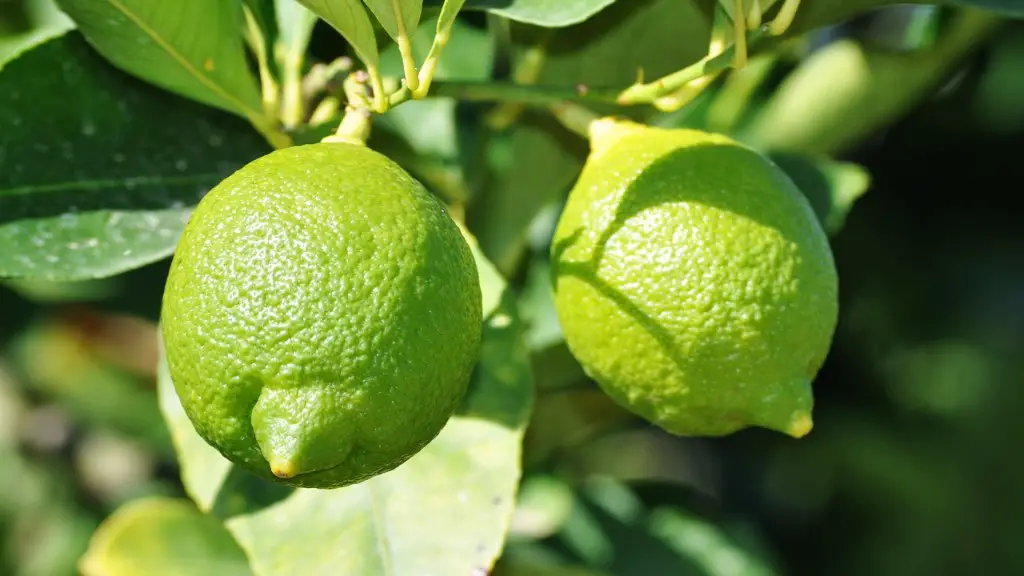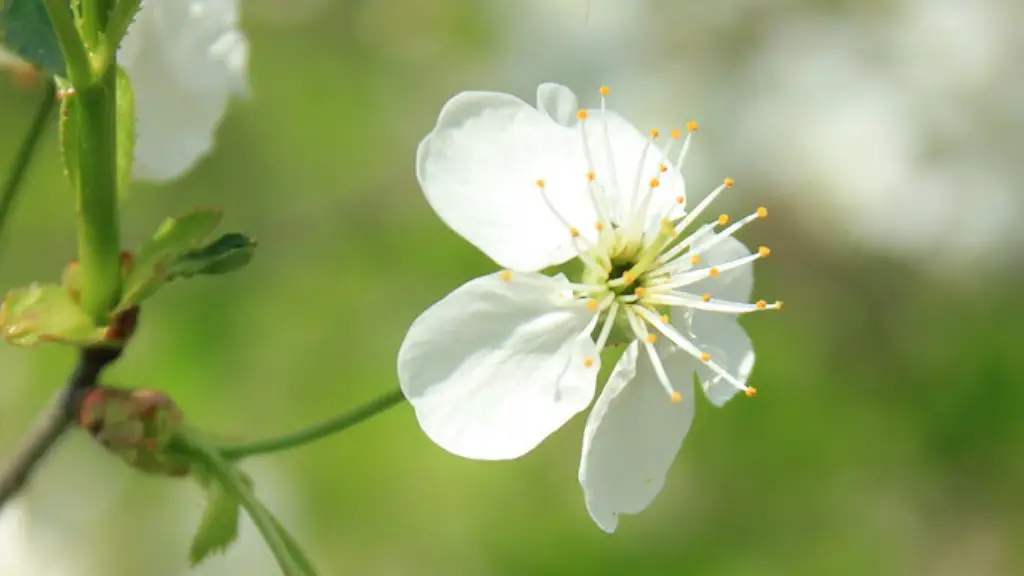Lemon trees are a common plant in the home garden and can easily be grown in containers. But how much space do they need? Lemon trees do not require an inordinate amount of space, but it is important to understand the size of a mature lemon tree in order to provide the correct amount of space.
The size of an adult lemon tree can vary depending on the variety grown, but a mature tree is likely to be somewhere in the range of 10 to 20 feet in height. This can mean that the tree needs an area of at least 12 by 12 feet for the full-grown tree to spread out and for the roots to grow. For a bare-root lemon tree (one that isn’t potted), the planting spot should be double the size of the root ball.
The type of container can also affect the amount of space it needs. If you are growing a potted lemon tree, for instance, you should use a container that is strong and large enough to accommodate the roots when the tree is fully mature. If you try to grow a lemon tree in a pot that is too small, the roots will not have enough space to grow and the tree will eventually struggle. A 20-gallon container should be a minimum size for potted lemon trees, but larger containers may be required depending on the size of the tree.
Lemon trees are also very particular about their light. Although they can tolerate some partial shade, they require at least 6 hours of direct sunlight to bear fruit. It is best to plant your lemon tree in an area that gets plenty of direct sunlight throughout the day so that it can thrive.
If you are growing your lemon tree in a pot, keep in mind that your tree will need frequent watering. Depending on the time of year and soil type, your lemon tree may need to be watered every day or every other day. The tree will also require occasional fertilization and care to ensure the healthiest growth possible.
Understanding how much space a lemon tree needs is essential Know how large your lemon tree will likely get is crucial to providing enough space and the necessary light, water, and feeding that the tree needs to thrive.
Effects of Too Little Space
Growing a lemon tree in too little space can lead to a number of problems. The most common issue is that the growth of the tree will be stunted. This will lead to fewer blooms and, in turn, fewer lemons. Additionally, the tree may become more susceptible to disease and pests, as it will be unable to reach its full potential with less space.
Without the necessary space, the tree’s roots may become stressed and unhealthy. This can lead to poor nutrient uptake, which is essential for the health of the tree. If a tree is not getting enough nutrients, it will be less able to fend off diseases and pests. It is also likely that the tree will be less productive, as it will be unable to bear a sufficient amount of fruit.
Finally, a tree that is overcrowded will be more likely to suffer from root rot and other fungal diseases. This is because the root system can become overcrowded and damage the roots, resulting in the tree being unable to properly absorb water and nutrients.
Effects of Too Much Space
Having too much space isn’t always the best option when it comes to lemon trees either. If a tree is given too much space, it may become over-fertilized and too lush, resulting in weakened branches, foliage, and lemons. Over-watering may also become an issue if a tree is planted too far away from a water source.
Another issue is that if the tree is planted in too much space, it may grow too quickly. This may lead to a lackluster lemon crop, as the tree won’t have time to properly mature and produce enough fruit. Additionally, trees that are planted in too much space can be prone to pests and disease, as their fast-growing root systems will not be as strong as those of a tree with the right amount of space.
Finally, a tree that is planted too far away from its nutrients and light source may be more susceptible to drought and insect attacks. This can lead to an unhealthy and unproductive tree, even if it is given ample amounts of water and sunlight.
Satisfying a Lemon Tree’s Needs
When planting a lemon tree, it is important to give it the correct amount of space. This means a minimum of 12 by 12 feet for a full-grown tree, or 20-gallon container for a potted tree. Additionally, lemon trees require 6 hours of sunlight a day and regular watering. If a tree is given the right amount of sunlight, water, and nutrients, it should be healthy and productive.
It is also important to remember that a tree’s space needs can change as it grows. As a tree matures, it will likely require more space than when it was first planted. It is important to afford the tree more space if needed, otherwise the tree may become stressed and unhealthy.
Finally, it is important to remember that the size of a mature lemon tree can vary depending on the variety grown. Some trees can reach up to 30 feet, so it is important to research carefully before planting to ensure that the tree has enough space to grow and thrive.
Factors Affecting Planting Location
When planting a lemon tree, it is important to consider several factors in order to ensure the tree has enough space. The most important factors are your climate and the area where you live. A cooler climate may require that you plant your tree in a spot that is a bit smaller than a warmer climate, as it will likely require less space.
Your soil type and drainage also play an important role in determining how much space your tree needs. If the soil is too wet, your tree may struggle to thrive. If the soil is too dry, you may need to provide more water or even create a better draining soil mix.
Finally, the amount of space you have available to you should also be taken into consideration. If you are limited on space, you may opt for a container-grown lemon tree that can easily be moved when necessary. Potted trees also require less water and may be better for those who live in wetter climates.
When to Transplant Trees
It is often advisable to transplant a lemon tree when it has outgrown its current location. If a tree is not given enough space, it will likely become stressed and unhealthy. Transplanting a tree to a larger container or new location can help it to reach its full potential.
It is generally best to transplant a lemon tree in the early spring, after the last frost has passed. This gives the tree the best chance of success in its new home. When transplanting a tree, it is important to take care to avoid damaging the roots, as this can seriously jeopardize the health of the tree.
It is also important to ensure that the new location you choose has adequate light, water, and nutrients. If a tree is placed in an unsuitable spot, it may struggle to thrive and could become unhealthy. Additionally, it is important to remember that your tree’s space requirements may change over time. As a tree grows, you may need to provide more space for it to reach its full potential.
Watering a Lemon Tree
Watering a lemon tree is important for its growth and development. Lemon trees like a well-draining soil, so it is important to water your tree deeply, but not too often. It is generally best to water your tree every 7-10 days. The amount of water your tree needs will depend on the temperature of the climate, the soil type, and the size of your tree.
When watering a lemon tree, it’s best to water slowly and deeply. This allows water to penetrate deeply into the soil, reaching the roots and giving the tree the hydration it needs to thrive. It is also important to check the soil before watering, as too much water can be just as detrimental to a lemon tree as too little.
Additionally, it is important to keep an eye out for signs of overwatering. If the leaves of your tree look yellow or wilt, this may be indicative of overwatering. Additionally, If your tree’s leaves are turning brown and dropping, this may also indicate that there is too much water.
Finally, it is important to remember that lemon trees need more water during the summer months, as they are drought-resistant plants. During hot weather, it is important to keep an eye on your tree and water it more frequently if necessary.




